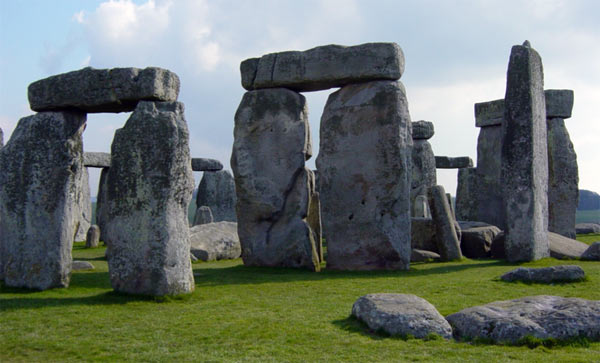Scientists find origin of Stonehenge stones
A team of geologists in Wales have conducted a study which has identified the source of the stones used to build Stonehenge and their results conflict with the location that has been believed to be the origin for nearly a century.
The study concerns the origin of the Stonehenge ‘bluestones’, a term used in a loose sense to cover all of the ‘foreign’ stones which are not native to Salisbury Plain where Stonehenge stands. The name actually refers to the spotted dolerite, an igneous rock that looks blue when broken and is spotted with small pellets of feldspar and other minerals that got into the molten matrix when the rocks were forming geological ages ago. Nearly a century ago, in 1923, the eminent petrographer, Herbert Thomas, was able to identify their source as the Preseli hills of southwest Wales, approximately 150 miles from Stonehenge.
It was initially believed that the stones came from a hill called Carn Meini. However, research techniques have advanced since then and now, through a comparison of x-rays taken on the dolerites from Stonehenge and the dolerites at a hill called Carn Geodog, approximately 1 mile from the previously believed location, the geologists have now confirmed that Carn Geodog is the source.
“This is an incredibly exciting project and we didn’t want to announce our findings before they had been properly evaluated in advance of publication. We got confirmation last week that they have been verified,” said Dr Richard Bevins, Keeper of Natural Sciences at the National Museum of Wales.
Much archaeological debate has been expended on how the bluestones arrived at Stonehenge – whether by human effort, floating the stones (each weighing several tonnes apiece) across water and dragging them across land, or whether they were deposited on Salisbury Plain naturally by glacial action. Although a small number of archaeologists still belief in the latter theory, most now believe the bluestones were brought by human transportation because glacial movement in the region does not support the transport of glacial erratics in the required manner. Now that the origin of the stones has been located, scientists may be able to unravel the mystery surrounding how they were transported.
However, another mystery also remains - why did our ancient ancestors specifically wish to use bluestones for the construction of their stone circle instead of using stones that were already native to the region? For now, this question remains unsolved.
The geologists’ research will be published in the Journal of Archaeological Science in about six months.
Source: Epoch Times



















